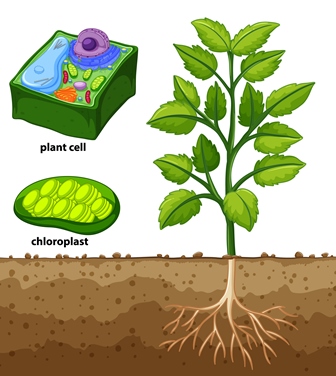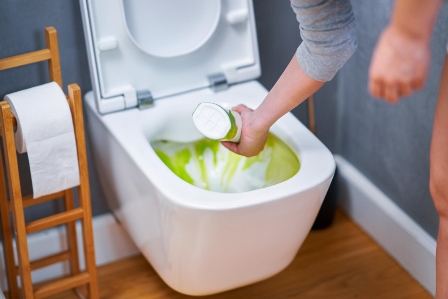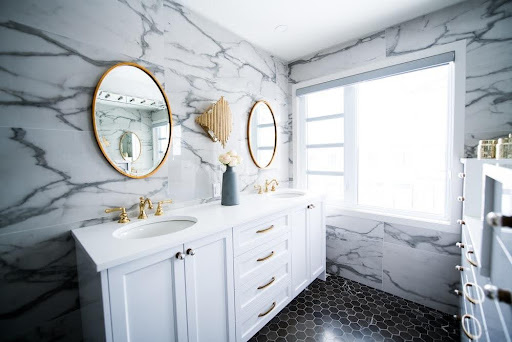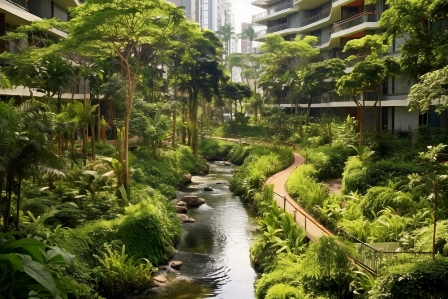Achieving a picture-perfect yard is a dream for many homeowners, but it requires careful planning and attention to detail. In this article, we’ll explore the most common landscaping mistakes to avoid at all costs to help you create the outdoor oasis you’ve always envisioned. Whether you’re a seasoned gardener or a novice, our expert insights will guide you on the path to a stunning yard that will leave your neighbors green with envy.
Overplanting: The Green Jungle
One of the most common mistakes in landscaping is overplanting. While a lush garden is enticing, too many plants can quickly turn your yard into a jungle. Instead, aim for a well-balanced and organized layout. Make sure to select plants that complement each other in terms of size, shape, and color. This ensures a harmonious and visually appealing garden.
Neglecting Proper Drainage
Neglecting proper drainage is a landscaping blunder that can lead to a waterlogged disaster. Inadequate drainage can cause soil erosion, root rot, and damage to your home’s foundation. To avoid this, ensure that your yard has sufficient drainage systems in place, such as French drains, swales, or proper grading.
Ignoring Sunlight and Shade
Plants have different light requirements, and ignoring these can lead to an unsightly yard. Before planting, assess the sunlight and shade patterns in your garden. Choose plants that thrive in the available conditions. Some plants love full sun, while others thrive in the shade. Understanding these requirements will lead to a healthier and more attractive landscape.
Forgetting About Maintenance
Landscaping isn’t a one-time endeavor; it requires ongoing care and maintenance. Neglecting regular upkeep can turn your picturesque yard into a chaotic mess. Remember to trim, prune, and weed regularly. Keep an eye on the health of your plants and address any issues promptly to maintain your yard’s beauty.
Skimping on Quality Soil
Your soil is the foundation of a healthy garden. Using low-quality or inadequate soil can hinder plant growth and lead to disappointing results. Invest in high-quality soil and enrich it with organic matter to provide essential nutrients for your plants. Healthy soil is the key to a vibrant and flourishing yard.
Planting Without a Plan
Planting without a plan is like sailing without a map. It often results in a haphazard and disorganized landscape. Before you start digging, create a detailed landscaping plan. Consider factors like plant placement, pathways, and focal points. A well-thought-out plan will guide your landscaping efforts and help you achieve the picture-perfect yard you desire.
Using Invasive Species
Introducing invasive plant species to your garden can lead to ecological imbalances and an uncontrollable jungle. Always research your plant choices and avoid species that could take over your yard and harm native plants. Opt for native or non-invasive species that coexist harmoniously with the local ecosystem.
Neglecting Hardscaping
A perfect yard isn’t all about plants. Neglecting hardscaping elements like paths, patios, and decorative structures can lead to an incomplete and less functional outdoor space. Incorporate hardscaping into your landscape design to add structure and aesthetic appeal. Well-placed features can enhance the overall beauty of your yard.
Skipping Mulch
Mulch is a landscaping superhero that many underestimate. Skipping mulch can result in weed infestations, soil erosion, and moisture loss. Apply a layer of mulch to your garden beds to retain moisture, suppress weeds, and improve the overall look of your yard. It’s a simple step that can have a significant impact.
Landscaping Mistakes to Avoid at All Costs for a Picture-Perfect Yard
Is it possible to create a picturesque yard without making these landscaping mistakes? Absolutely! With the right knowledge and careful planning, you can achieve the yard of your dreams. By avoiding these common errors, you’ll be well on your way to a stunning and vibrant outdoor space.
FAQs
Overplanting can be avoided by selecting plants that complement each other in terms of size, shape, and color. Create a well-balanced and organized garden layout to prevent overcrowding.
Signs of poor drainage include standing water, soil erosion, and water damage to your home’s foundation. If you notice these issues, it’s essential to address drainage problems promptly.
To assess sunlight and shade patterns, observe your yard throughout the day. Take note of areas that receive full sun, partial sun, and shade. This will help you choose the right plants for each area.
Creating a landscaping plan involves considering plant placement, pathways, and focal points. You can sketch your ideas on paper or use online design tools to visualize your plan.
Invasive species can harm native plants and disrupt the local ecosystem. They can quickly take over your yard, making it difficult to control and maintain.
Applying mulch once a year is generally sufficient to retain moisture, suppress weeds, and improve the overall appearance of your garden.
Conclusion
Creating a picture-perfect yard is a rewarding endeavor, but it requires careful planning and a keen eye for detail. By avoiding common landscaping mistakes such as overplanting, neglecting drainage, and ignoring sunlight and shade, you can ensure that your outdoor space becomes a breathtaking oasis. Remember, a well-thought-out landscaping plan and regular maintenance are key to achieving the yard of your dreams.












Find Us on Socials